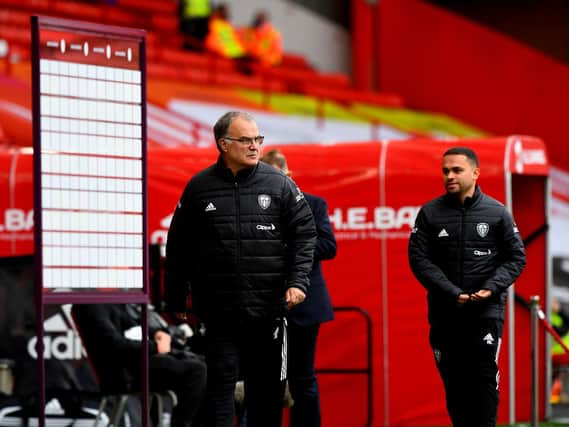Marcelo Bielsa loves a plan and takes responsibility for the outcome but what plan will fill Elland Road again? Daniel Chapman


We all know Marcelo Bielsa loves a plan. I’d like his opinion, then, on the plan for football supporters to be watching Premier League matches. In October. The October that just ended with a full moon, a visitation from Massimo Cellino’s witches, and a fourth tier of lockdowns. That plan.
Bielsa will never say. He has repeated several times on several topics that, as a guest worker in this country, he will defer on regulatory matters to the authorities responsible for them.
Advertisement
Hide AdAdvertisement
Hide AdThat stance is not quite as benign as it sounds. Nothing strikes fear into the responsible authorities quite like being asked to take responsibility for their authority.
Bielsa is testing them. Would they act as he would? Plans don’t always work out. But when Bielsa writes the plan, Bielsa bears the brunt.
He tells the story of handing a dossier to Pep Guardiola at the end of Athletic Bilbao’s Copa del Rey final with Barcelona.
Here, he told Pep, is all the research and planning I did for this game. It must have been a painful handover, after a 3-0 defeat, because to Marcelo the hefty document was now a bible of his own stupidity. But he thought Guardiola might benefit, both from the analysis of Barcelona, and from an object lesson in planning to fail.
Advertisement
Hide AdAdvertisement
Hide AdThe Covid-19 pandemic is bigger than football. There have been more than 46,000 deaths in the United Kingdom, meaning we’re at the point of needing to expand Elland Road to accommodate all their memories.
I remember writing here, back in March, comparing death tolls in Italy to the capacity of the Cheese Wedge. We’ve come a long way while getting absolutely nowhere.
But everyone is experiencing the coronavirus in different ways, based on its impact on their particular corner, and for a lot of us Elland Road’s continuing emptiness is the most visible, audible, and depending on who you used to sit next to, olfactory reminder that all is not well.
Even when league football stopped during the wars and Elland Road was being used by the army, there were still Leeds City and Leeds United games and people could still go to watch them.
Advertisement
Hide AdAdvertisement
Hide AdOur prolonged absence is unprecedented, and while there are questions about the impact the void is having on this season, I’m interested in what those terraces will be like when – if – they’re filled again.
There are more aspects to the way crowd and community dynamics are expressed in football stadiums than I have space for here. But I always remember a headline in a 1990s issue of The Square Ball, describing a Leeds defeat as ‘A Good Sing-Song Ruined’. What happened between fans in the stands was always as important as what happened between players on the pitch.
Football crowds have changed over time — hooliganism, fences, disasters, seats and prices — but this has never happened before. They never just stopped.
The evolution of crowds is fascinating, often because of what hasn’t changed. Most chants still have their roots in pop hits of the 1980s and earlier, for a start. Where else does the music of KC and the Sunshine Band endure?
Advertisement
Hide AdAdvertisement
Hide AdAt Elland Road, local journalists cottoned on as early as the 1930s to the hostile atmosphere, even towards United’s own players, comparing it unfavourably to Parkside up the road, where Hunslet Rugby League were cheered from first to last. In the 1950s, captain Tom Holley took the mic at a Supporters’ Club party and led the players in good-natured booing of their fans, to let them know what it was like.
The Scratching Shed’s modernisation can be traced by the 1960s chant ‘Get into them, get after them’ becoming something unrepeatable outside the South Stand now, but the habit of keeping the ball is nothing new: Jack Charlton once ran the length of the pitch to argue with the fans’ singing ‘We’ve got the ball!’ and holding the game up. The fans had numbers but Jack was Jack, and the ball was handed over.
I could go on, to the transfer of supporters from the West Stand, after it burned down in 1956, to the Lowfields, meaning an urgent search for cushions. But the question is about how much of this will come back when we come back, and how much will survive what looks like, at least, a full season away.
Football pitches are where plans are carried out in the midst of a great unplanned swirl of traditions, folklore and Joy Division. What plan will bring that back?
Comment Guidelines
National World encourages reader discussion on our stories. User feedback, insights and back-and-forth exchanges add a rich layer of context to reporting. Please review our Community Guidelines before commenting.